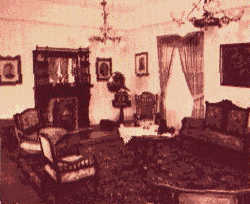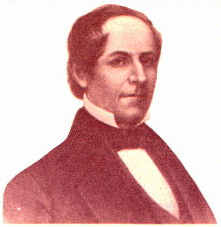
Dominguez Ranch
The conquest of the native population through arms, germs, and religion opened up vast land areas for colonization. The Rancho San Pedro, which came to be known as the Dominguez Ranch, began as a gift of 75,000 acres of land to a Spanish soldier in 1784. The soldier's name was Juan Jose Dominguez. Forty three years later, in 1827, his nephew, Manuel Dominguez, built this adobe home for his new bride.

The vast Rancho spread out across most of what is now the South Bay region, from the Los Angeles River on the east, to the Pacific Ocean on the west. It encompassed what is now Torrance, Carson, Redondo Beach, and the L.A. Harbor. At the ranch's center, perched atop Dominguez Hills, was the home of the Dominguez family.

|
|
|
The adobe ranch home contained six good-sized rooms, including a chapel. The home was built to last, with two-foot thick walls, heavy timbers and a flat, tarred roof. One hundred and seventy years later, it is still standing, and is open to visitors as an historical museum.
The luxurious furniture that adorned this residence was not made by local craftsmen. Most of it was carried by sailing ship around the cape of South America. Many of these furnishings are still on display at the Dominguez Ranch adobe.
 Wealth
in turn brought power. Don Manuel Dominguez was one of the very few citizens
of his era to hold public office under both the Mexican and U.S. governments
in California. Before 1857, he was elected three times as Acalde (Mayor)
and Judge; he was chosen as a delegate to the convention in Monterey which drew
up the first State Constitution, and he later served as a Supervisor for
Los Angeles County. The rancho was also the scene of the 1846 skirmish
known as the Battle of Rancho Dominguez, during the U.S.-Mexican War.
Wealth
in turn brought power. Don Manuel Dominguez was one of the very few citizens
of his era to hold public office under both the Mexican and U.S. governments
in California. Before 1857, he was elected three times as Acalde (Mayor)
and Judge; he was chosen as a delegate to the convention in Monterey which drew
up the first State Constitution, and he later served as a Supervisor for
Los Angeles County. The rancho was also the scene of the 1846 skirmish
known as the Battle of Rancho Dominguez, during the U.S.-Mexican War.
When the railroad was built between Los Angeles and the harbor in 1869, Manuel Dominguez donated land from the rancho for the the new venture. The Dominguez home also served as a convenient and hospitable stopover for travelers on horseback or for those taking the stagecoach between the Pueblo and the San Pedro port.
Manuel Dominguez & his bride, Engracia, raised six daughters at the adobe home, who are remembered today by the many streets and businesses named after their families. One of the Dominguez daughters, Susana, married a man named Del Amo (a name familiar to anyone in the South Bay because of the giant Del Amo Fashion Center mall in Torrance). Another Dominguez daughter, Dolores, took a husband named Watson (known today for the Watson Land Company and Industrial Centers). A third daughter, Maria Victoria, married a successful businessman named George Henry Carson.
George & Victoria Carson moved into the Rancho's adobe home, where they lived until the 20th century dawned. The city of Carson is named after their son, John Manuel Carson, a key figure in the development of the South Bay in the 20th Century, and the head of the Dominguez Water Corporation.
Perched atop a gentle hill, and surrounded by acres of well-tended landscaping, the 170-year-old Dominguez Ranch Adobe is a peaceful oasis in the Los Angeles urban sprawl. The adobe home has been listed as California Historical Landmark No. 152. It is now a historical museum, open to the public for informative guided tours, during which visitors can learn more about life in the early days of Old California. The address is 18127 Alameda Street, in Carson. Just take the Alameda Street exit from the San Diego (405) Freeway, head south a few blocks., and turn right where the sign indicates. Tours of the adobe home are held on Tuesdays and Wednesdays from 1 PM to 4 PM, and on the second and third Sundays of each month, also from 1 PM to 4 PM. For more information, phone (310) 631-5981 or (310) 636-6030.
|
|
|
|
|||||
|
Maintained by Francis F. Steen, Communication Studies, University of California Los Angeles |
|||||||